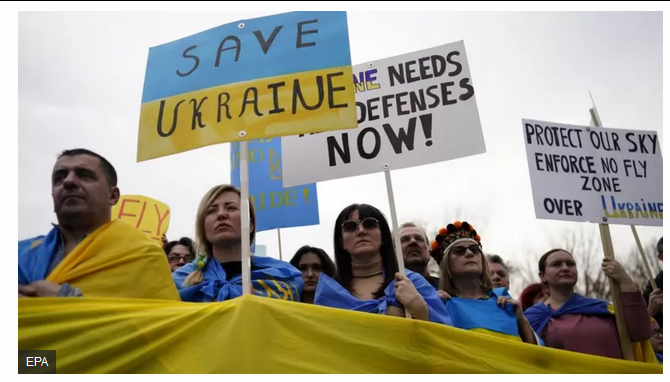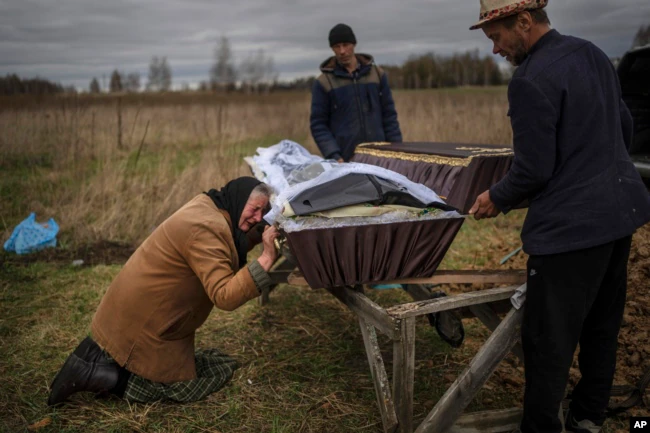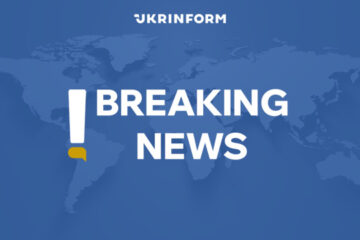
The human toll
At least tens of thousands” of Ukrainian civilians have died so far, President Volodymyr Zelenskyy said on June 3 in comments to Luxembourg’s parliament. In Mariupol alone, officials have reported over 21,000 civilian dead. Sievierodonetsk, a city in the eastern region of Luhansk that has become the focus of Russia’s offensive, has seen roughly 1,500 casualties, according to the mayor. Such estimates comprise both those killed by Russian strikes or troops and those who succumbed to secondary effects such as hunger and sickness as food supplies and health services collapsed. (https://youtu.be/EfL7G_yaxBA)
At least 318 children have been killed and 581 more injured since Russia started its all-out invasion of Ukraine in late February. “As of the morning of June 16, 2022, more than 900 children were killed or injured in Ukraine as a result of Russia’s full-scale armed aggression. According to official information from juvenile prosecutors, 318 children have been killed and 581 more have been injured,” the Prosecutor General’s Office.
According to the statement, these figures are not final, as work is underway to establish casualties in the areas of active hostilities, in the temporarily occupied and liberated territories. Most children were affected in Donetsk region – 297, Kharkiv region – 170, Kyiv region – 116, Chernihiv region – 68, Luhansk region – 54, Kherson region – 52, Mykolaiv region – 48, Zaporizhzhia region – 30, Sumy region – 17. The most known examples: on June 14, a two-month-old baby was taken to hospital after being seriously injured by Russia’s shelling of the town of Vuhledar in the Donetsk region; on March 15, two families and their five children were killed in an airstrike by Russian invaders on residential buildings in Mariupol; on February 24, on the way out of the village of Martove, Chuhuiv district, Kharkiv region, a mother and her 16-year-old son came under tank fire, with the child sustaining a shrapnel wound.
But Government officials, U.N. agencies and others who carry out the grim task of counting the dead don’t always get access to places where people were killed. It means nobody really knows how many combatants or civilians have died exactly. According to bitter points of view, government officials may provide approximately figures for public relations reasons — are all but impossible to verify because of war

The devastation
Relentless shelling, bombing and airstrikes have reduced large swaths of many cities and towns to rubble. Ukraine’s parliamentary commission on human rights says Russia’s military has destroyed almost 38,000 residential buildings, rendering about 220,000 people homeless. Nearly 1,900 educational facilities from kindergartens to grade schools to universities have been damaged, including 180 completely ruined. Other infrastructure losses include 300 car and 50 rail bridges, 500 factories and about 500 damaged hospitals, according to Ukrainian officials. The World Health Organization has tallied 296 attacks on hospitals, ambulances and medical workers in Ukraine this year. A new report accuses Russia of committing war crimes in Kharkiv, killing hundreds of civilians there since the start of the invasion of Ukraine. Amnesty International says it found evidence of the use of cluster bombs and scatterable landmines.
Sexual Violence
When Russian forces withdrew from the suburbs around Kyiv, the horrors they left behind — bodies lying in the streets, signs of summary killings and reports of torture and mass graves — shocked the Western world and elicited calls for war crimes investigations. Then there were the accounts of rape and other sexual violence — at a factory in Bucha, in a basement in Irpin, at gunpoint in a village east of Kyiv. But, experts say, rape is an extremely difficult crime to document and even more challenging to prosecute — especially in times of war. “Today’s documentation is tomorrow’s prosecution,” said Pramila Patten, the United Nations special representative on sexual violence in conflict. “We need trained people to do this work to have a better chance of pursuing cases to the highest level.” Sexual Violence ‘Most Hidden Crime’ Being Committed against Ukrainians, Civil Society Representative Tells Security Council. Allegations of sexual violence by Russian troops in Ukraine are mounting as the conflict passes its 100-day mark, a senior United Nations official told the Security Council today, voicing regret over a stark discrepancy between that painful reality and the global community’s ambition to end the use of rape as a tactic of war. Stressing that victims are often unable or unwilling to report to law enforcement authorities, she also spotlighted the steep reduction in functioning service providers, such as maternity hospitals. As of 3 June, the Human Rights Monitoring Team of the United Nations High Commissioner for Human Rights (OHCHR) had received reports of 124 alleged acts of conflict-related sexual violence, occurring against women, girls, men and boys in various Ukrainian cities and regions. Women and girls constitute most of the alleged victims, while some reporting instances of sexual violence were also men and boys. Verification of cases is ongoing, and a national hotline on domestic violence, human trafficking and gender-based discrimination has been set up. To date, it has received reports of rape, gang rape, pregnancy following rape, attempted rape, threats of rape, coercion to watch an act of sexual violence committed against a partner or a child, and forced nudity.
Fleeing home
Millions of Ukrainians have been displaced by the war, with the United Nations High Commissioner for Refugees (UNHCR) on June 14 recording 5,094,531 refugees scattered across Europe alone. In the rest of the world, they estimate there are 6.1 million Ukrainian refugees.
Land seized
Ukrainian officials say that before the February invasion, Russia controlled some 7% of Ukrainian territory including Crimea, which Russia annexed in 2014, and areas held by the separatists in Donetsk and Luhansk. On June 3, Zelenskyy said Russian forces now held 20% of the country. While the front lines are constantly shifting, that amounts to an additional 58,000 square kilometers (22,000 square miles) under Russian control, a total area slightly larger than Croatia or a little smaller than the U.S. state of West Virginia. Ukraine, meanwhile, has reported suffering a staggering economic blow: 35% of GDP wiped out by the war. “Our direct losses today exceed $600 billion,” Andriy Yermak, the head of Zelenskyy’s office, said recently. Ukraine, a major agricultural producer, says it has been unable to export some 22 million tons of grain. It blames a backlog of shipments on Russian blockades or capture of key ports. Zelenskyy accused Russia this week of stealing at least a half-million tons of grain during the invasion.
A total of 1,263 criminal proceedings have been instituted into these and other crimes committed by the servicemen of the invading army. In particular, 866 proceedings were launched under Art. 438 of the Criminal Code (violation of laws and customs of war), and 349 under Art. 110 (encroachment on the territorial integrity and inviolability of Ukraine).
… and the world
Those data tell just a part of the overall picture of Europe’s worst armed conflict in decades. Some numbers and statistics that — while in flux and at times uncertain — shed further light on the death, destruction, displacement and economic havoc wrought by the war as it reaches this milestone with no end in sight. The fallout has rippled around the globe, further driving up costs for basic goods on top of inflation that was already in full swing in many places before the invasion. Developing countries are being squeezed particularly hard by higher costs of food, fuel and financing. Crude oil prices in London and New York have risen by 20 to 25 percent, resulting in higher prices at the pump and for an array of petroleum-based products. Wheat supplies have been disrupted in African nations, which imported 44% of their wheat from Russia and Ukraine in the years immediately before the invasion. The African Development Bank has reported a 45% increase in continental prices for the grain, affecting everything from Mauritanian couscous to the fried donuts sold in Congo.
Amin Awad, the U.N. crisis coordinator in Ukraine, said 1.4 billion people worldwide could be affected by shortages of grain and fertilizer from the country. “This war’s toll on civilians is unacceptable. This war has no winner,” he told reporters in Geneva via video from Kyiv on Friday. “Today we mark a tragic milestone. And we know what is needed the most: to stop this war.




